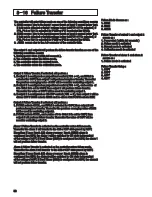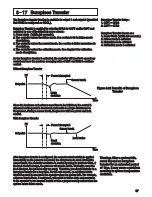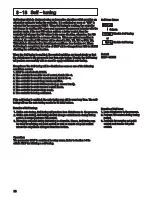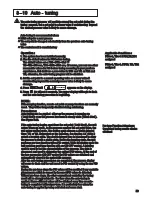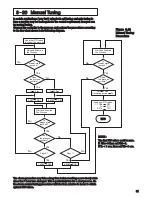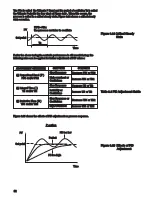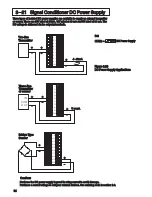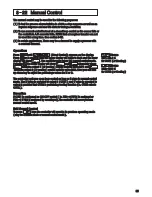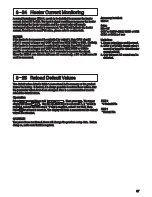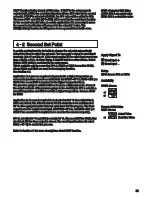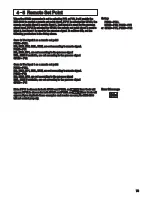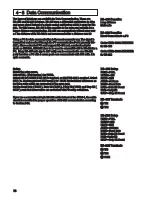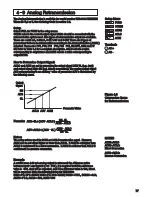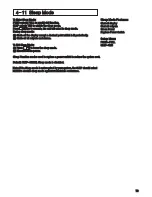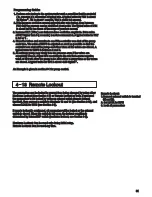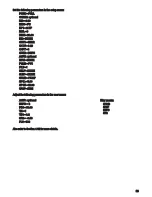
Chapter 4 Programming the Full Function
Chapter 4 Programming the Full Function
4 1 Event Input
4 1 Event Input
68
Refer to Section 2-10 for wiring an event input.
The Event input accepts a digital type signal.
types of signal :
relay
or switch contacts,
open collector pull low and
TTL logic level, can be
used to switch the event input.
Three
(1)
(2)
(3)
Refer to Section 2-10 for wiring an event input.
The Event input accepts a digital type signal.
types of signal :
relay
or switch contacts,
open collector pull low and
TTL logic level, can be
used to switch the event input.
Three
(1)
(2)
(3)
One of ten functions can be chosen by using
( EIFN ) contained in
setup menu.
One of ten functions can be chosen by using
( EIFN ) contained in
setup menu.
NONE : Event input has no function
If chosen, the event input function is disabled. The controller will use PB1, TI1
and TD1 for PID control and SP1 ( or other values determined by SPMD ) for
the set point.
NONE : Event input has no function
If chosen, the event input function is disabled. The controller will use PB1, TI1
and TD1 for PID control and SP1 ( or other values determined by SPMD ) for
the set point.
SP2: If chosen, the SP2 will replace the role of SP1 for control.
SP2: If chosen, the SP2 will replace the role of SP1 for control.
PID2: If chosen, the second PID set PB2, TI2 and TD2 will be used to replace
PB1, TI1 and TD1 for control.
PID2: If chosen, the second PID set PB2, TI2 and TD2 will be used to replace
PB1, TI1 and TD1 for control.
SP.P2: If chosen, the SP2, PB2, TI2 and TD2 will replace SP1, PB1, TI1 and
TD1 for control.
SP.P2: If chosen, the SP2, PB2, TI2 and TD2 will replace SP1, PB1, TI1 and
TD1 for control.
Event input
Event input
+
Event input
Event input
+
17
16
EIFN
Terminals:
0 NONE
1 SP2
2 PID2
3 SP.P2
4 RS.A1
5 RS.A2
6 R.A1.2
7 D.O1
8 D.O2
9 D.O1.2
10 LOCK
0 NONE
1 SP2
2 PID2
3 SP.P2
4 RS.A1
5 RS.A2
6 R.A1.2
7 D.O1
8 D.O2
9 D.O1.2
10 LOCK
RS.A1: Reset Alarm 1 as the event input is activated. However, if alarm 1
condition is still existent, the alarm 1 will be retriggered again while the event
input is released.
RS.A1: Reset Alarm 1 as the event input is activated. However, if alarm 1
condition is still existent, the alarm 1 will be retriggered again while the event
input is released.
RS.A2: Reset Alarm 2 as the event input is activated. However, if alarm 2
condition is still existent, the alarm 2 will be retriggered again while the event
input is released.
RS.A2: Reset Alarm 2 as the event input is activated. However, if alarm 2
condition is still existent, the alarm 2 will be retriggered again while the event
input is released.
R.A1.2: Reset both Alarm 1 and Alarm 2 as the event input is activated.
However, if the alarm 1 and/or alarm 2 are still existent, the alarm 1 and/or
alarm 2 will be triggered again while the event input is released.
R.A1.2: Reset both Alarm 1 and Alarm 2 as the event input is activated.
However, if the alarm 1 and/or alarm 2 are still existent, the alarm 1 and/or
alarm 2 will be triggered again while the event input is released.
The RS.A1, RS.A2 and R.A1.2 are to be used for Latching and/or
Latching/Holding alarms.
The RS.A1, RS.A2 and R.A1.2 are to be used for Latching and/or
Latching/Holding alarms.
D.O1: Disable Output 1 as the event input is activated. The output 1 control
variable MV1 is cleared to zero.
D.O1: Disable Output 1 as the event input is activated. The output 1 control
variable MV1 is cleared to zero.
D.O2: Disable Output 2 as the event input is activated. The output 2 control
variable MV2 is cleared to zero.
D.O2: Disable Output 2 as the event input is activated. The output 2 control
variable MV2 is cleared to zero.
D.O1.2: Disable both Output 1 and Output 2 by clearing MV1 and MV2 values
as soon as the event input is activated.
D.O1.2: Disable both Output 1 and Output 2 by clearing MV1 and MV2 values
as soon as the event input is activated.
When either D.O1, D.O2 or D.O1.2 is selected for EIFN, the output 1 and/or
output 2 will revert to their normal conditions as soon as the event input is
released.
When either D.O1, D.O2 or D.O1.2 is selected for EIFN, the output 1 and/or
output 2 will revert to their normal conditions as soon as the event input is
released.
NOTE:
Auto-tuning
Self-tuning
If the second PID set is chosen during
and/or
procedures, the new PID values will be stored in PB2, TI2 and TD2.
NOTE:
Auto-tuning
Self-tuning
If the second PID set is chosen during
and/or
procedures, the new PID values will be stored in PB2, TI2 and TD2.
LOCK:
Section
4-13
All parameters are locked to prevent from being changed. See
for more details.
LOCK:
Section
4-13
All parameters are locked to prevent from being changed. See
for more details.



